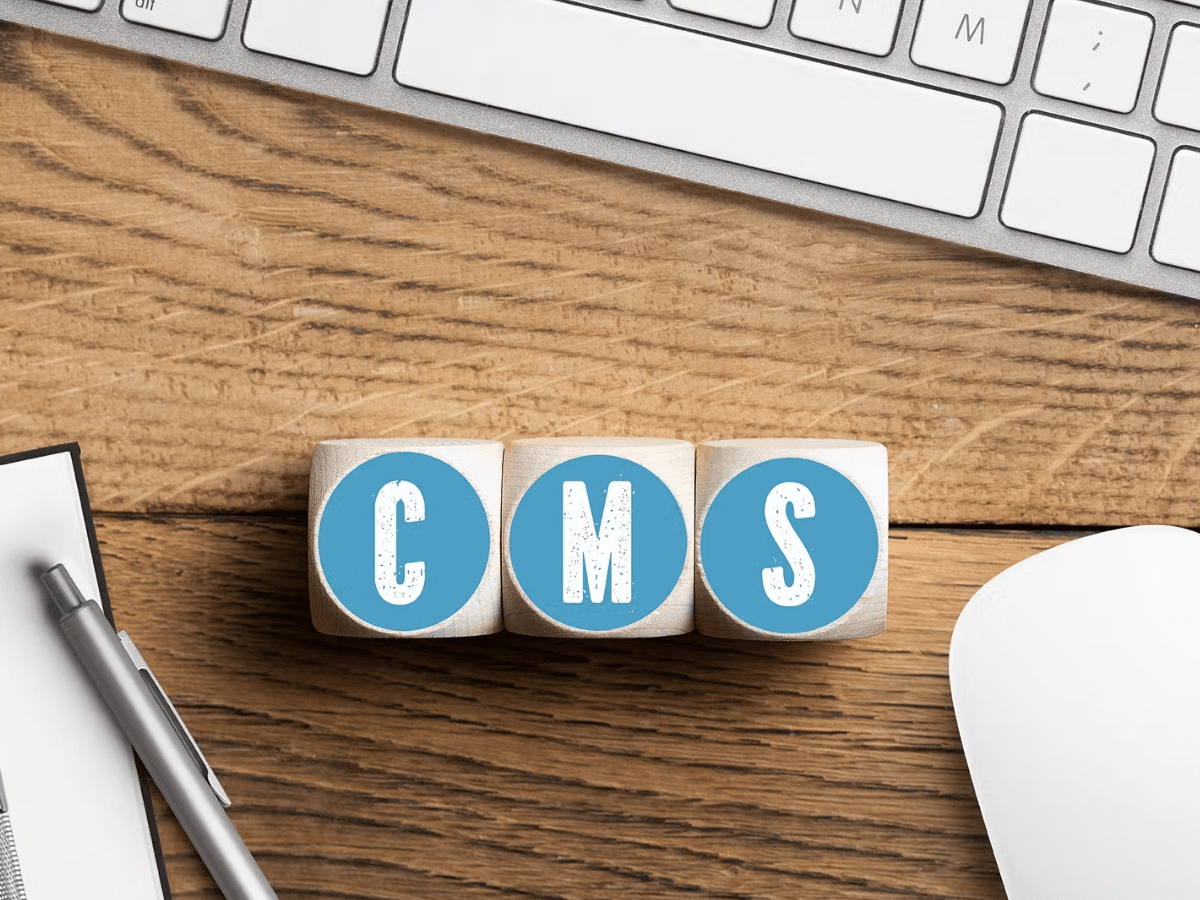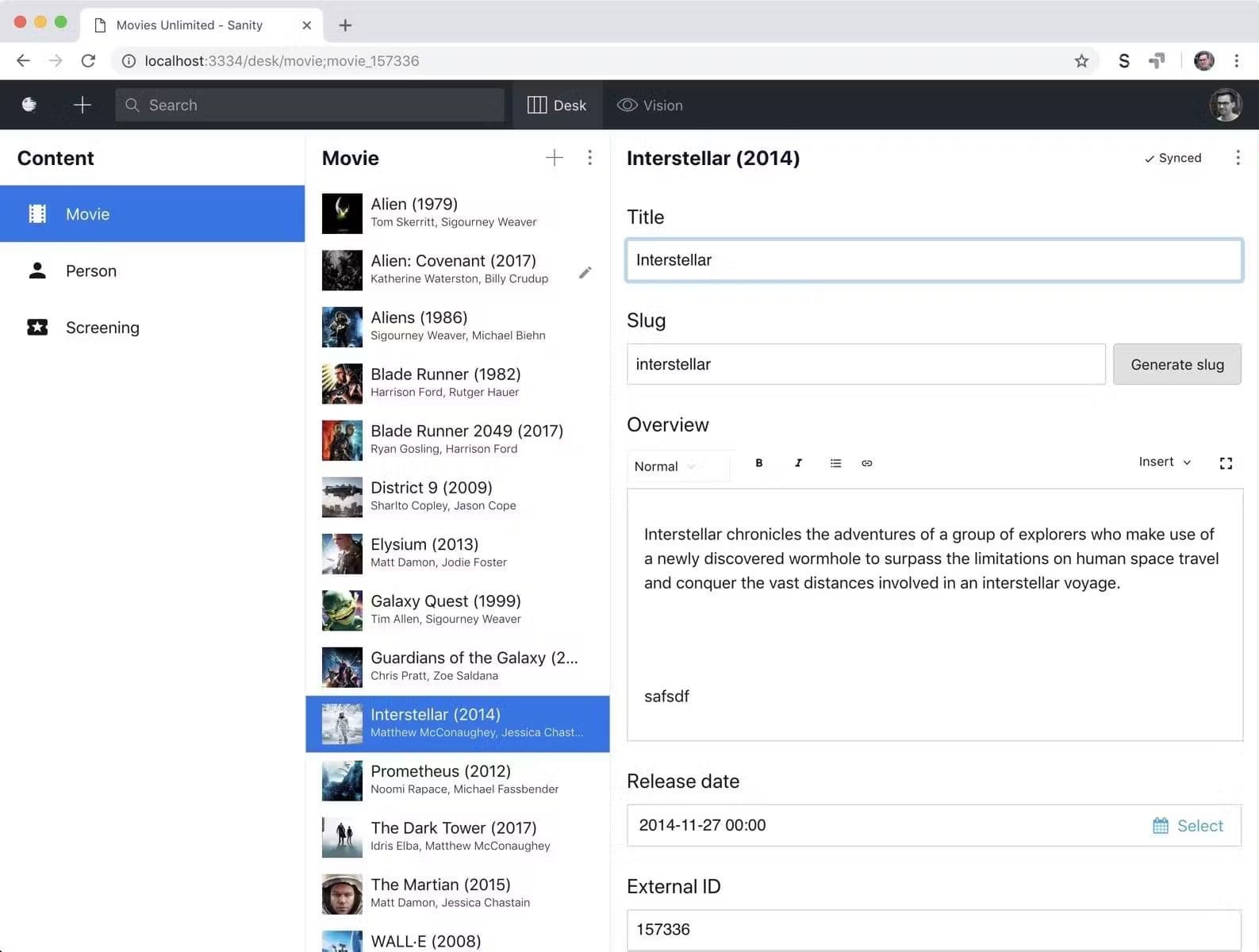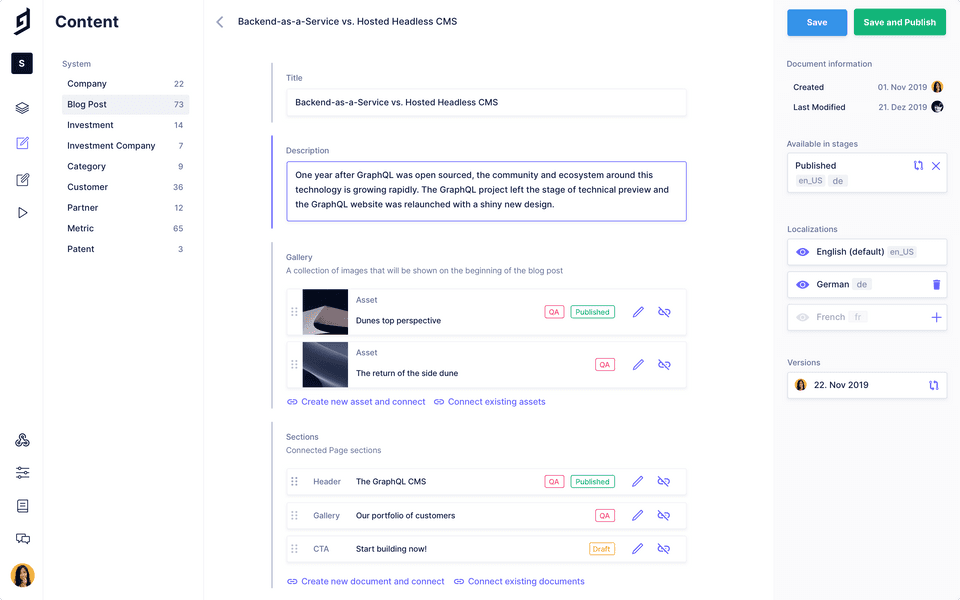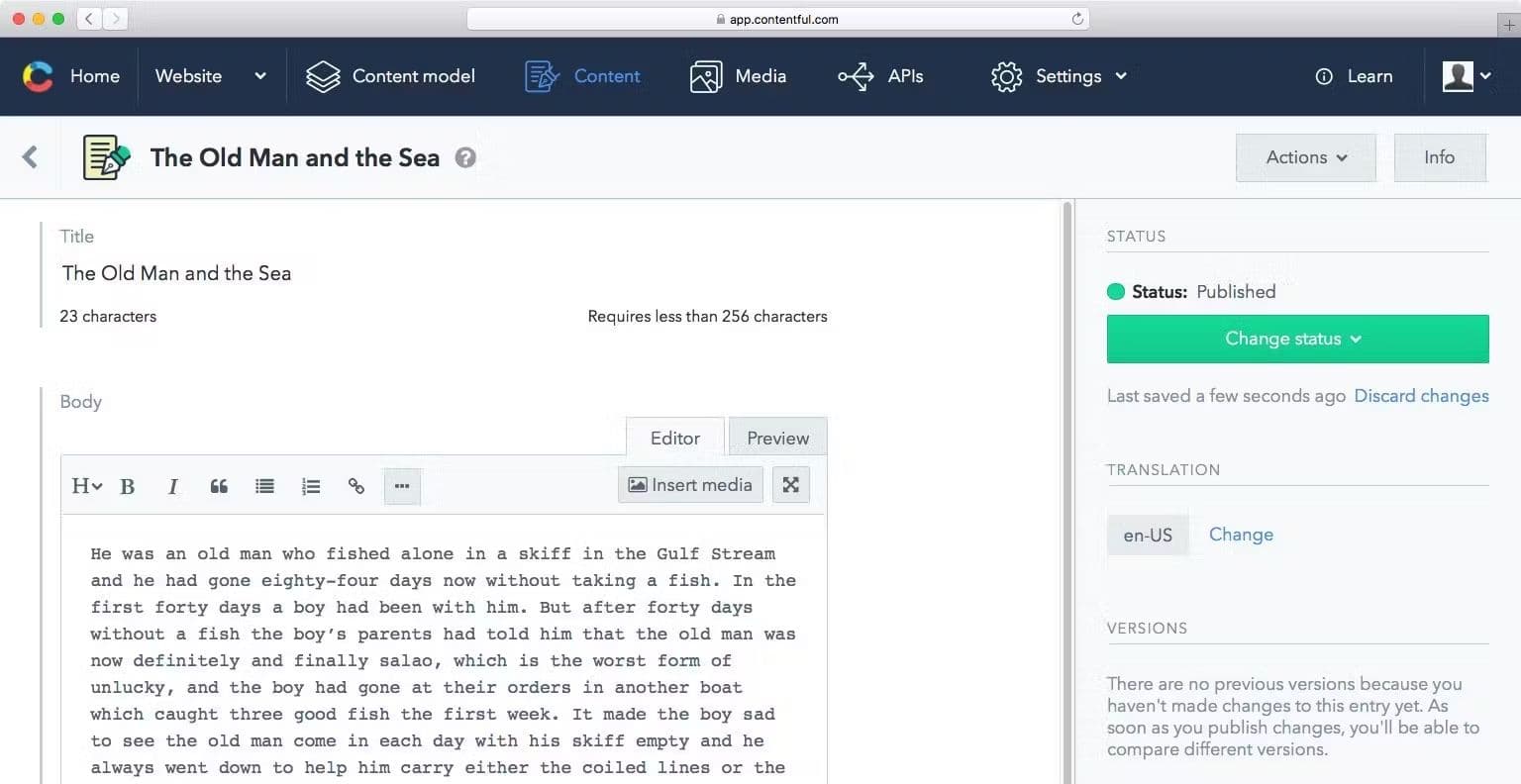The Rise of Headless CMS - Part 2

Important update (2023-07-05):
This post was written in August of 2021 and a lot has changed in the past 2 years. Contentful was our top choice at the time of this article but it's now the superior choice at every price point. We no longer recommend using Prismic or Sanity. The Contentful platform is far more capable and can be quickly implemented on everything from small websites to enterprise content platforms and applications. It's hard to beat Contentful at any price or in any feature/functionality comparison.
Reach out today if you need more information or want to leverage our Contentful expertise for your project.
In part two of this series on Headless CMS technology we are going to take a look at some of the popular platforms. To say that there are a ton of options is an understatement. The recent growth in the headless CMS marketplace has been intense. Venture capital investment in the technology has exploded and partnerships between traditional technology providers and upstart Headless CMS companies has abounded. However, there are several players worthy of consideration that we have hands-on development experience with at ShineForth and have chosen to highlight for you here.
Prismic

Prismic is a headless CMS solution that has a low barrier to entry comparable to other solutions. The interface is simple to use, intuitive and offers a lot of quick wins out of the gate like dynamic image compression. Properly deployed, Prismic will eliminate image performance issues due to the way it delivers compressed images over CDN. Content creation is easy using their custom types and field which is another benefit. For more complex uses like programmatically creating content or migrating large amounts of content, Prismic is not as capable. So if a key software requirement is to be able to bulk import content or create content in Prismic using API's, you'll want to look elsewhere.
Overall, the Prismic experience is a pleasant one and their pricing is the most reasonable we've experienced in this space. Prismic's free level is very capable, although limited to a single user. They offer a $100/month medium plan that increases the number of users and unlocks their import/export utility among other things. In general, Prismic is a very capable solution for small to medium sized websites and simple projects.
Sanity

Sanity has a very robust developer friendly platform for managing content as data. Their core message is that their platform was built by developers, for developers. The platform features a customizable UI for editors called Studio, which is basically a React application that developers can customize based on their needs. Sanity also has their content lake to structure data across departments and organizations.
Sanity puts more control in your hands to fully configure the data model and the content editing experience. Sanity is definitely a developer driven platform however, so you won't get very far without a good development team onboard from the get-go supporting you. This makes it less easy to get started when compared with something like Prismic, but also less likely to run into technology capability barriers down the road.
So while Sanity has more capability, fully utilizing that capability at the start will involve bringing in developers early and often to make configuration changes and/or create new content components. You need a solid data architecture design to get the most out of Sanity and a strong collaboration with your development team.
Overall, Sanity has some strong brand backing and a generous free level to get started. However, if you have a heavy amount of API requests and/or dataset requirements you will quickly need their business pricing level or above. That starts about $950/month which we found to be on the higher-end for costs.
GraphCMS

GraphCMS is a feature packed CMS solution that focuses on a future-proof, API-first approach with collaborative content editing, powerful localization, granular permissions system and an extensions library. It has a lightweight, fast content editing experience that is simple to learn. Furthermore, GraphCMS has a sophisticated mutation API that allows developers to create, update, and delete any content using code.
GraphCMS also features robust digital asset management with an "on the fly" asset transformation API. Performance is fast and images are delivered using a fast CDN architecture. The platform also features web-hooks, localization, and a GraphQL-based API approach. GraphQL is definitely not unique to GraphCMS but it’s a core part of their technology messaging. They have a few more field choices out of the box than Sanity but they also dial back some of the complexity and ultimate customization of the platform as well. For example, you do not have the completely customizable editing experience that Sanity provides with their Studio application and Sanity’s data model capabilities could be slightly more capable from a developer point of view.
GraphCMS has a professional plan that starts at $300 and competes well with Sanity and Contentful, who we will take a look at next. Their enterprise plan more than doubles the cost but increases the number of licenses, environments, localizations and content capacity.
Overall, GraphCMS works well with multiple technologies and front-end platforms. They have a solid, reliable platform that is powered by good technology and a powerful feature set. It also saves a little money per month over Sanity and Contentful. However, GraphCMS may not be the most capable solution for large companies that have highly complex content challenges and need very robust enterprise scale capabilities.
Contentful

Contentful is a very robust enterprise solution for content that is geared towards larger businesses, mature marketing strategies, and a sophisticated development architecture. They are the biggest player in this space for a reason. Their app framework, API integrations and unified content management experience is the most capable platform of any Headless CMS that we have worked with.
Contentful treats content like code with an API-first architecture so it works very well as an enterprise platform. The biggest drawbacks are the pricing structure and complexity of the platform implementation and support. The costs can get rather expensive depending on the subscription plan with the type of usage and the complexity of the content structure driving your costs. The most common plan starts at $500 but you can quickly find yourself needing their enterprise pricing, which can be very expensive.
Overall, Contentful is the best-in-class enterprise solution that has feature capability above what most other headless CMS solutions can offer. It is definitely suited for organizations with a very mature content strategy and a very good working relationship between the marketing and development teams, as it will require a lot of technology expertise, effort and cost to maximize the value to the organization
Conclusion
Headless CMS solves a lot of problems with security, scale and speed to market for content strategy. It’s a future-proofing technology that unlocks your capability to be nimble and efficient with your content and your technology. The list of possible headless CMS solutions is larger than the ones we covered in this article and this space is also innovating quickly. In addition, there are not one-size fits all headless CMS solutions so you will need to carefully evaluate your platform requirements before you select your headless CMS platform.
From the looks of it, Prismic is quickest to get started and offers the largest bang for the buck out of the gate for websites and simple projects. For slightly more complex projects a better option would be GraphCMS or Sanity, provided you have a solid development team as support. For large enterprises and complex content structures, Contentful is the best-in-class platform but carries the largest amount of costs to fully deploy.
Regardless of which platform is used, it is clear that Headless CMS and API-first content strategies are solving real-world content strategy challenges and enabling companies to be more innovative with their technology architecture.
Note: If you have questions or need help implementing a Headless CMS or API-first content strategy, please reach out to the ShineForth team. We would be glad to connect and be considered as a possible partner for your company.